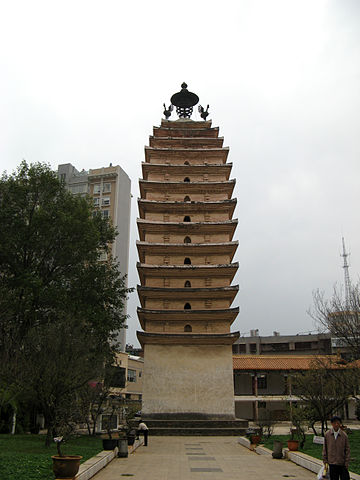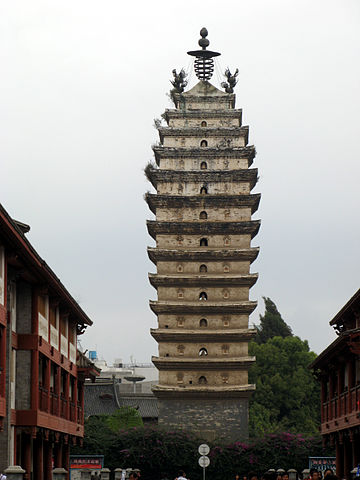
East Face of West Pagoda

West Face of East Pagoda

Roosters on East Pagoda

East Face of West Pagoda |

West Face of East Pagoda |

Roosters on East Pagoda |
Nanzhao Kingdom, 824-895 AD
Kunming
Kunming's East and West pagodas were originally built during the 9th century (Nanzhao Kingdom in Yunnan, contemporaneous with the Tang Dynasty in China proper). Despite a long history of restoration, rebuilding, and even relocation, their form and decoration still reflects many of the buildings' original features. The main gate of Kunming, no longer extant, used to be located between the two towers.
The pagodas are 13 stories high, with statues set in the external niches of each level. Metal roosters, of uncertain date, are set on each of the four upper corners of the tower; it's explained locally that roosters are enemies of dragons, so they help protect the pagodas and the city against storms. This symbolism goes all the way back to India, where Vishnu's bird-mount Garuda is often depicted as holding snakes in his beak.
Originally, in India, the pagoda was a brick-walled earthen mound that held relics of the Buddha. In China, the pagoda form developed into a tall tower that was modeled on Han-dynasty watchtowers. The curved profile of the Kunming pagodas is like their contemporaries in Tang China. However, the typical imitation of wood and timber construction is less detailed in the decoration of the Kunming examples, marking them out as a provincial variant of the Tang pagoda type.

|